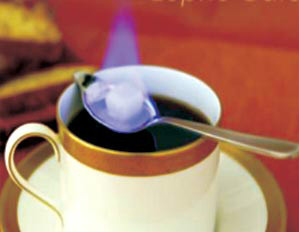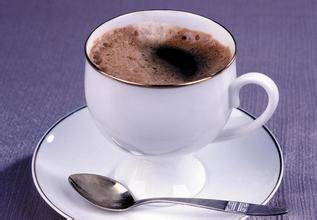How to choose fresh coffee beans
Choose fresh coffee beans. When buying, pay attention to whether the color of the beans and the size of the particles are the same. Good coffee beans are shiny and have a strong aroma without being mixed with peculiar smell. No matter what kind of coffee beans, freshness is an important factor affecting the quality. When shopping, grab one or two coffee beans in your mouth and chew them with a crisp sound (indicating that the coffee is not damp) and the fragrance of the teeth and cheeks is the top grade, but it is best to squeeze it with your hands to feel whether it is solid, rather than buying crispy coffee. If the coffee bean has lost its fragrance or smells stale, it means that the coffee bean is no longer fresh and is not suitable for purchase.
Freshly fried coffee beans are not suitable for immediate consumption and should be stored for a week to completely release the gas from the beans.
The taste of coffee lies in its aroma, which begins to lose as soon as the roasting is finished. No matter how expensive the coffee beans are, if they are not fresh, the taste will be greatly reduced. In his book Espresso coffee: the science of quality, Andrea Illy, the current boss of espresso illy, has an article detailing the "off-flavor" of coffee beans and the impact of different packaging methods on quality. Each kilogram of coffee beans, in an unsaturated environment, emits about 6 to 10 liters of carbon dioxide, equivalent to 1% to 1.2% of the total weight of beans. Of these, 35% were discharged in the first 3 days after baking. With the discharge of carbon dioxide, there is an equal amount of aromatic volatiles (volatile aromatics). In other words, there are some flavors that will dissipate if you don't drink the coffee beans for the first three days after stir-frying. The author further mentioned that stale beans not only "take away" the good taste, but also create a bad taste. The compounds in beans are affected by oxidation (oxidation) and the taste becomes negative. So coffee on supermarket shelves is usually slightly oily. Because it usually takes months to bake and import from foreign countries to the shelves. The "tasting period" (note: not a valid date) has long passed.
Generally speaking, the best drinking period for coffee is a week after stir-frying, when the coffee beans are the freshest and the Aroma taste is the best.
In addition, the purity of coffee beans is also another consideration. The expert candidate for coffee is not necessarily to look at the size of the particles, but to grab a handful of individual coffee beans (Regional Coffee), about dozens of portions, to see whether the color of each single bean is the same, and whether the particles are similar in size and shape, so as to avoid buying shoddy products disguised as mixed beans. But if it is a synthetic bean (Blended Coffee), it is a normal phenomenon that the size and color are different. In addition, heavy heat and medium-deep roasting will cause coffee beans to produce oil, but if the lightly roasted beans produce oil, they have gone bad, not only reducing aroma, but also astringent and sour taste. In short, when buying coffee, we should pay attention to its freshness, aroma and whether it is stale or not, and the ideal purchase quantity is to be able to drink it in half a month.
Cooked beans taste more stable.
Andrea Illy has done a lot of scientific research on coffee packaging and quality maintenance. He believes that fried coffee needs to be aging in a monitored environment before being packaged. Because the taste of cooked coffee beans is more stable. However, he also made it clear that the definition of aging and stale is very vague. The author believes that this is the blind spot of the concept of "raising beans". The so-called bean cultivation is similar to red wine which needs moderate oxidation to become smooth and layered after opening the bottle, but after being kept for a long time, the wine will turn sour again. Freshly fried coffee beans sometimes have grassy (peasy), which will disappear after the next night. On the other hand, new beans have a taste of baked bread, which those who insist on growing beans may not have tasted. In the author's coffee shop, freshly fried beans will be on the shelves after one night. Although the taste will change over time, guests can also see it as an extra journey, witnessing the ups and downs of coffee. Of course, to get rid of the beans that have been fried for two weeks is the basic persistence of being a boutique coffee shop.
Mode of production editing
Ruwak coffee beans [the most famous coffee beans in history come from the remains of coffee beans in the feces of cats and muskcats after eating coffee beans]
Muscat Coffee (Kopi Luwak), Kopi (Indonesian, coffee), Luwak refers to an arboreal wild animal commonly known as "civet" by Indonesians, which looks similar to masked palm civet in southern China. It is found in Sumatra, Zawa, and Sulvis and is part of the 13677 islands of Indonesia. Luwak is an omnivore. They are eccentric, have a keen sense of smell, have thick hair and long tail, like to walk at night, and live in tropical rain forests, subtropical evergreen broad-leaved forests, mountain thickets or hills, mountains and grasses below 2000 meters above sea level. Their foods include small beasts, birds, amphibians and reptiles, crustaceans, fruits and seeds of insects and plants, and so on.
The Indonesian island of Sumatra produces excellent coffee beans, which were found in masked palm civet's feces in the bushes.
Lianhe Zaobao reported on the 6th that there is a coffee garden on a mountain 100 kilometers southeast of Medan City on Sumatra Island. Every morning, operators have to go to the coffee garden to look for masked palm civet's feces and pick out coffee beans. They think masked palm civet is a natural machine for removing the pulp of coffee.
Masked palm civet specializes in eating the most mature coffee fruit, where the enzymes in the body decompose the pulp of the coffee fruit and then discharge the coffee beans. Workers collect the coffee beans, wash their feces and make a drink that is irresistible to coffee lovers.
Makoni, an assistant professor in the Department of Food Science at the University of Guelph in Canada, explained that after coffee beans enter masked palm civet's digestive system, they break down proteins into small molecules of enzymes that interact with coffee beans. When coffee beans are roasted, these low molecular weight proteins react with carbohydrates or sugars of coffee beans, giving "Ruwak Coffee" the famous natural flavor of chocolate.

Important Notice :
前街咖啡 FrontStreet Coffee has moved to new addredd:
FrontStreet Coffee Address: 315,Donghua East Road,GuangZhou
Tel:020 38364473
- Prev

Coffee bean production method production area
Ruwak coffee beans [the most famous coffee beans in history come from coffee beans left in the feces of cats after eating coffee beans] Musk Coffee (Kopi Luwak), Kopi (Indonesian, coffee), Luwak is an arboreal wild animal commonly known as the civet in Indonesia, which looks similar to masked palm civet in southern China. Produced in Sumatra, Zawa, and
- Next

How to taste the quality and flavor of Blue Mountain Coffee
How to taste coffee should be like tasting a cup of wine. Only by careful taste can you appreciate its essence. The use of a siphon coffee maker will give Blue Mountain Coffee a unique charm. First smell the original aroma of the coffee, then take a small sip to try the original taste, then add the right amount of sugar according to your preference, and stir with a small spoon, taking advantage of the stirring coffee whirlpool, slowly add the milk and let the fat float on the coffee.
Related
- Does Rose Summer choose Blue, Green or Red? Detailed explanation of Rose Summer Coffee plots and Classification in Panamanian Jade Manor
- What is the difference between the origin, producing area, processing plant, cooperative and manor of coffee beans?
- How fine does the espresso powder fit? how to grind the espresso?
- Sca coffee roasting degree color card coffee roasting degree 8 roasting color values what do you mean?
- The practice of lattes: how to make lattes at home
- Introduction to Indonesian Fine Coffee beans-- Java Coffee producing area of Indonesian Arabica Coffee
- How much will the flavor of light and medium roasted rose summer be expressed? What baking level is rose summer suitable for?
- Introduction to the characteristics of washing, sun-drying or wet-planing coffee commonly used in Mantenin, Indonesia
- Price characteristics of Arabica Coffee Bean Starbucks introduction to Manning Coffee Bean Taste producing area Variety Manor
- What is the authentic Yega flavor? What are the flavor characteristics of the really excellent Yejasuffi coffee beans?

